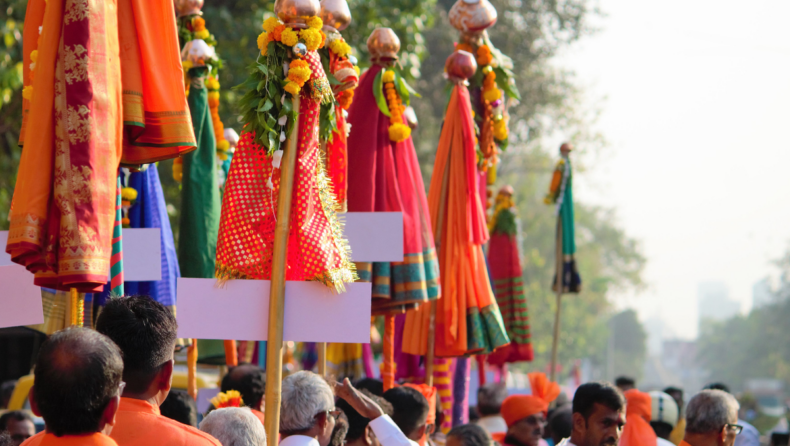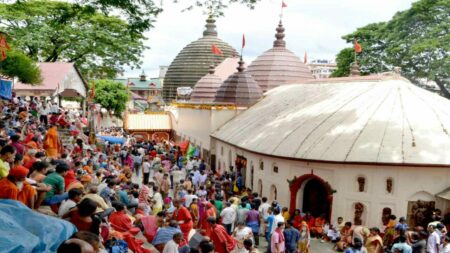Gudi Padwa is a Hindu spring celebration that commemorates the Hindu new year. It is observed on the first day of the Chaitra month to mark the start of the new Hindu calendar year using the lunisolar method.
Padwa is derived from the Sanskrit term Pratipada, which refers to the first day of the lunar fortnight. Colorful rangoli floor decorations, a unique Gudi Dhwaja (flag garlanded with flowers, mango & neem leaves, topped with upturned silver or copper containers), street processions, dancing, and festive dishes are all part of the spring event.
The day is referred to as samsara padavo by Konkani Hindus. Ugadi is celebrated by Telugu Hindus, while yugadi is celebrated by Kannada Hindus. This day is known as Cheti Chand in the Sindhi community, and it is honored as Lord Jhulelal’s emergence day.
The day is commemorated by the preparation of delicacies such as Tahiri (sweet rice) and Sai Bhaji (spinach cooked with a sprinkle of chana dal).
Gudi is a multicolored silk scarf-like material tied at the top of a long bamboo strand. Neem and mango leaves, as well as a garland, are fastened to the top. A silver, bronze, or copper pot (Kalash) is placed on top of the arrangement to symbolize triumph or achievement.
The entire setup is erected outside each home or terrace.
Gudi Padwa is a festival that celebrates the entrance of spring and the harvesting of Rabi crops. The event commemorates the fabled day when Hindu god Brahma created time and the universe, as well as the start of the Shalivahan calendar following his victory against the Huns in the 1st century.
Published By – Damandeep Singh
Edited By- Kritika Kashyap













